#Paty González
Text
Su plan es conquistar al mundo, con o sin corona… “Cindy La Regia: La Serie”

Cindy es una adolescente que quiere conquistar el mundo, pero antes debe sobrevivir a la prepa y a la presión de la alta sociedad de San Pedro Garza García. Para ello contará con el mejor squad: sus inseparables amigas, Lu y Tere, y su recién llegada prima chilanga, Angie.
Entre el FOMO y los cambios, ellas se atreverán a desafiar las reglas en el amor y el qué dirán hasta comprobar que juntas son imparables.
Estreno: 20 de diciembre de 2023 en Netflix.
youtube
La serie cuenta con las actuaciones de Michelle Pellicer, Vincent Michael Webb, Anxel García, Gustavo Cruz, Luciana Vale, Carola Cuarón, Eduardo Apodaca, Erick De La Torre, Daria Alicia, Verónica Mendiola, Vianney Martínez, Paty González, Eduardo Arvizu, Alexandro Villaseñor, Mario Loría, Janneth Villarreal, Nahuel Escobar y Carla Medina.

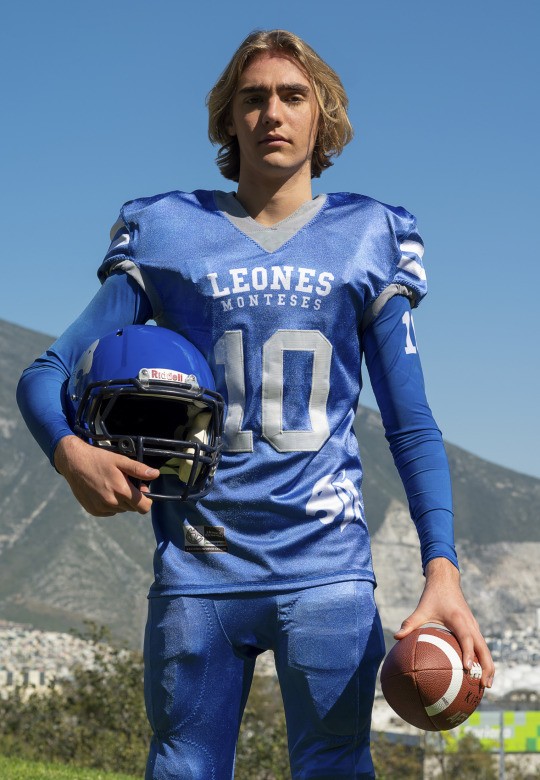



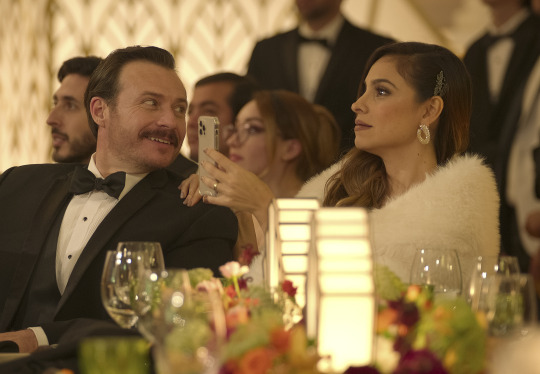
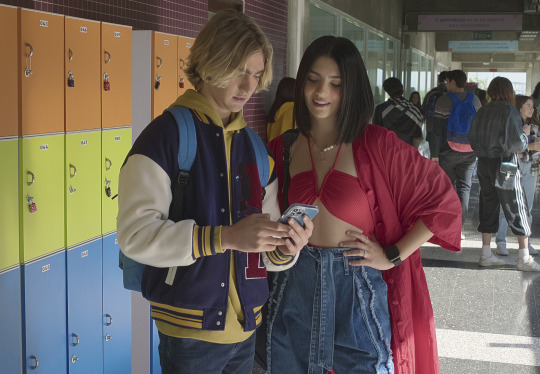


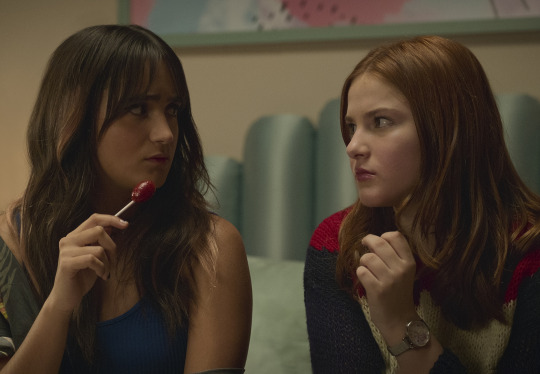

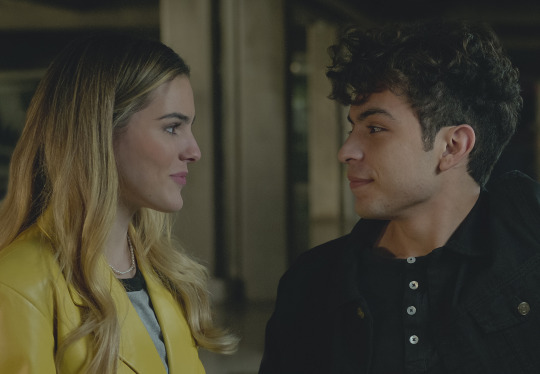

#Cindy La Regia: La Serie#Michelle Pellicer#Vincent Michael Webb#Anxel García#Gustavo Cruz#Luciana Vale#Carola Cuarón#Eduardo Apodaca#Erick De La Torre#Daria Alicia#Verónica Mendiola#Vianney Martínez#Paty González#Eduardo Arvizu#Alexandro Villaseñor#Mario Loría#Janneth Villarreal#Nahuel Escobar#Carla Medina#Series#Netflix
2 notes
·
View notes
Text
Cindy la Regia: La serie
Cindy la Regia: La serie (Serie 2023)
#MichellePellicer #AnxelGarcía #CarolaCuarón #LucianaVale #VincentMichaelWebb #NahuelEscobar
Mehr auf:
Serie / Cindy la Regia: The High School Years Jahr: 2023- (Dezember)
Genre: Comedy / Drama
Hauptrollen: Michelle Pellicer, Anxel García, Carola Cuarón, Luciana Vale, Vincent Michael Webb, Nahuel Escobar, Janneth Villarreal, Mario Loría, Verónica Mendiola, Daria Alicia, Gustavo Cruz, Vianney Martínez, Erick De La Torre, Paty González, Carla Medina …
Serienbeschreibung: Cindy (Michelle Pellicer)…

View On WordPress
0 notes
Text
ESPECTACULAR “HANAL PIXÁN”, ANA PATY PERALTA REGRESA LA TRADICIÓN A PUERTO JUÁREZ
Maritza Annette González Villanueva| QUINTANAROOHOY
CANCÚN.- La magia y el colorido del “Hanal Pixán 2023” se apoderaron una vez más de Puerto Juárez en su tercera edición, una celebración que busca preservar las tradiciones y fomentar la unión vecinal entre jóvenes y niños.
Con la canción “La Llorona” interpretada por la voz de una catrina, descendieron de las lanchas, las catrinas y catrines…

View On WordPress
0 notes
Video
vimeo
VICTORIA | Nuestras Manos | YOUTH + VIRA-LATA from The Youth on Vimeo.
“Nuestras Manos” by YOUTH & VIRA-LATA for Cerveza Victoria
Agency: Ogilvy MX
Creatives: Javier Melo & Kevin Murcia
Production Co.: Oriental Films
Cinematography: Agustin Claramunt
Additional Cinematography: Yuri Maranhão
VFX Creative Direction: Diogo Gameiro & Juliano Storchi
Production Design: Carol Ozzi
AD: Rosella Fragoso
2AD: Diego Pineda
Executive Production: Michelle Lacoste, Mauri Clavijo, Paola Ortega, Valeria Ascencio, Carolina Moreno
Editing: João Machado & Maria Luísa Machado
Grading: Fernando Lui at Marla
VFX: Dopo
Sound: Satelite Audio
Animation Quetzalcoatl
Concept & Animation: Rodrigo Miguel Numecaniq
Animation Chilly Eater
Animation Line Producer: Daniel Maia
Concept Artist: Gustavo Magalhães
Motion: Gabriel Rocha
Animation Director: Bruno Brasil
Clean up Supervisor: Denise Bargos
Animation: Robbs Reis
Clean Up: Gabriel Fraga, Ulisses Juca, Filipe Emerson, Willian Lieder
Post Production Oriental
Post Supervisor: Pedro Aragón
Coordinator: Alicia Ortega, Victor Oseguera
Production Design
Director Production Design: Carol Ozzi
Ass. Production Design: Nic Zaira, Letícia Sena
Coordination PD: Josefina Sandroni
Decoradora: Lauren Leal
Utilero: Roberto "Negro" Díaz
Cinematography:
DOP: Agustin Claramunt
AC: Fernando Gutierrez
2 AC: Rodrigo González
Gaffer: Ernesto Gil Rodríguez
Production
Line Production: Arnold Inclan
Production Coordination: Karla Esquivel
Unit Manager: Jorge Alvarez Alor
APOC: Tanya Meraz del Campo
AP: Daniel Balanzario, Kenner Sharpe Pallares
Runner: Jorge Woolrich
Styling
Styling: Lele
AS: Shardey Collin, Gerardo Roche
Make-Up: Israel Escareno Chong
AM: César Nava
Coordinator Picture cars: Esther Ureña
SFX Supervisor: Luis Ambriz
Sound
Sound: Satelite Audio
Direction: Roberto Coelho, Kito Siqueira e Hurso Ambrifi
Account: Fernanda Costa, Renata Schincariol e Daniel Chasin.
Production: Roberto Coelho, Kito Siqueira, Hurso Ambrifi, Thiago Colli, Mike Vlcek, Charly Coombes e Adilson Koiti.
Post-Production Supervisor: Carla Cornea, Vithor Moraes, Ian Sierra, Arthur Dossa, Renan Marques
Post-Production Supervisor Assistant: Alexandre Avicena.
Production Coord.: Camila Guedes, Val Pacheco, Bruna Isidore e João Piccoli.
Food Stylist: Paty Martínez
Location
Manager: Victor Nava
Clean: Gabriel Bolivar "Pacquiao"
Safety: Alberto Rodriguez
Transportation
Transportation: Oscar Garduño
Production van: Isaac Navarro
Camper: Fernando Gordillo
Catering
Catering: LR Catering
DIT VTR
Render: Gerardo Gómez
Coord. Video: Ximena Jiménez
Gear
Grip & Camera: Esperanza Caballero
Tramoya & Planta: Esperanza Caballero
Walkie Talkies: Martha Ríos
Covid Protocol
Sanitization: SG Yan Legarreta
Casting
Casting Director: Juan Álvarez "Gallo"
Extras: Marcos Sanroman
Table Top
Director: Marindia
Ass Table Top: Giuliana Panvini
DOP: Sabastián Cantillo
AC: Alan Kelvin
Digital Unity: Nea Serrano
DOP: Santiago Azuela
AC: Armando Rodrigugez
Gaffer: Antonio Betancourt
Insurance:
AARCO: Guilherme Salido
Ambulance: Adan Ávila
MKO: Oswaldo Luis Hidalgo, Elias Franco
Still: Diego Flores
Storyboard: Walfrido Monteiro
Treatment Visual Concepts: Fabio Miraglia
0 notes
Video
vimeo
VICTORIA | Nuestras Manos | YOUTH + VIRA-LATA from The Youth on Vimeo.
“Nuestras Manos” by YOUTH & VIRA-LATA for Cerveza Victoria
Agency: Ogilvy MX
Creatives: Javier Melo & Kevin Murcia
Production Co.: Oriental Films
Cinematography: Agustin Claramunt
Additional Cinematography: Yuri Maranhão
VFX Creative Direction: Diogo Gameiro & Juliano Storchi
Production Design: Carol Ozzi
AD: Rosella Fragoso
2AD: Diego Pineda
Executive Production: Michelle Lacoste, Mauri Clavijo, Paola Ortega, Valeria Ascencio, Carolina Moreno
Editing: João Machado & Maria Luísa Machado
Grading: Fernando Lui at Marla
VFX: Dopo
Sound: Satelite Audio
Animation Quetzalcoatl
Concept & Animation: Rodrigo Miguel Numecaniq
Animation Chilly Eater
Animation Line Producer: Daniel Maia
Concept Artist: Gustavo Magalhães
Motion: Gabriel Rocha
Animation Director: Bruno Brasil
Clean up Supervisor: Denise Bargos
Animation: Robbs Reis
Clean Up: Gabriel Fraga, Ulisses Juca, Filipe Emerson, Willian Lieder
Post Production Oriental
Post Supervisor: Pedro Aragón
Coordinator: Alicia Ortega, Victor Oseguera
Production Design
Director Production Design: Carol Ozzi
Ass. Production Design: Nic Zaira, Letícia Sena
Coordination PD: Josefina Sandroni
Decoradora: Lauren Leal
Utilero: Roberto "Negro" Díaz
Cinematography:
DOP: Agustin Claramunt
AC: Fernando Gutierrez
2 AC: Rodrigo González
Gaffer: Ernesto Gil Rodríguez
Production
Line Production: Arnold Inclan
Production Coordination: Karla Esquivel
Unit Manager: Jorge Alvarez Alor
APOC: Tanya Meraz del Campo
AP: Daniel Balanzario, Kenner Sharpe Pallares
Runner: Jorge Woolrich
Styling
Styling: Lele
AS: Shardey Collin, Gerardo Roche
Make-Up: Israel Escareno Chong
AM: César Nava
Coordinator Picture cars: Esther Ureña
SFX Supervisor: Luis Ambriz
Sound
Sound: Satelite Audio
Direction: Roberto Coelho, Kito Siqueira e Hurso Ambrifi
Account: Fernanda Costa, Renata Schincariol e Daniel Chasin.
Production: Roberto Coelho, Kito Siqueira, Hurso Ambrifi, Thiago Colli, Mike Vlcek, Charly Coombes e Adilson Koiti.
Post-Production Supervisor: Carla Cornea, Vithor Moraes, Ian Sierra, Arthur Dossa, Renan Marques
Post-Production Supervisor Assistant: Alexandre Avicena.
Production Coord.: Camila Guedes, Val Pacheco, Bruna Isidore e João Piccoli.
Food Stylist: Paty Martínez
Location
Manager: Victor Nava
Clean: Gabriel Bolivar "Pacquiao"
Safety: Alberto Rodriguez
Transportation
Transportation: Oscar Garduño
Production van: Isaac Navarro
Camper: Fernando Gordillo
Catering
Catering: LR Catering
DIT VTR
Render: Gerardo Gómez
Coord. Video: Ximena Jiménez
Gear
Grip & Camera: Esperanza Caballero
Tramoya & Planta: Esperanza Caballero
Walkie Talkies: Martha Ríos
Covid Protocol
Sanitization: SG Yan Legarreta
Casting
Casting Director: Juan Álvarez "Gallo"
Extras: Marcos Sanroman
Table Top
Director: Marindia
Ass Table Top: Giuliana Panvini
DOP: Sabastián Cantillo
AC: Alan Kelvin
Digital Unity: Nea Serrano
DOP: Santiago Azuela
AC: Armando Rodrigugez
Gaffer: Antonio Betancourt
Insurance:
AARCO: Guilherme Salido
Ambulance: Adan Ávila
MKO: Oswaldo Luis Hidalgo, Elias Franco
Still: Diego Flores
Storyboard: Walfrido Monteiro
Treatment Visual Concepts: Fabio Miraglia
0 notes
Text


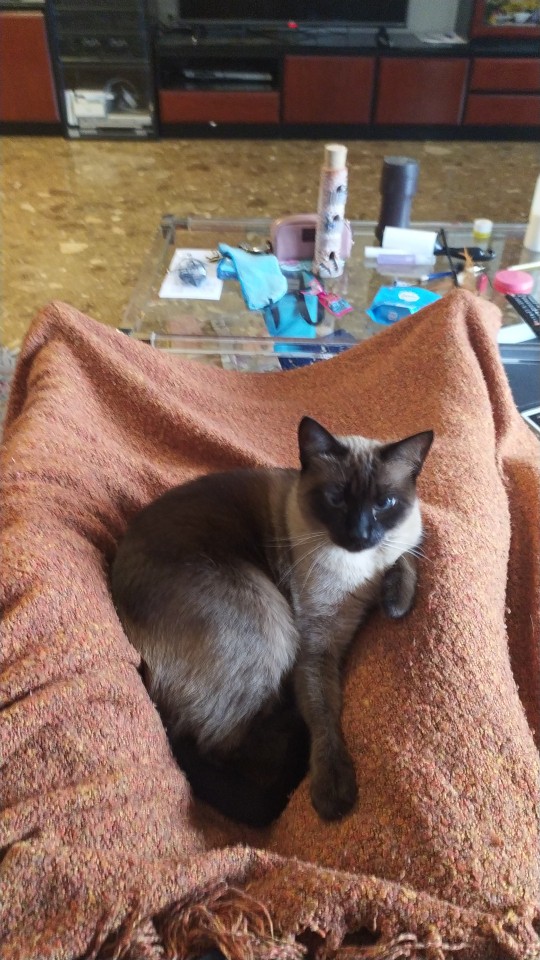
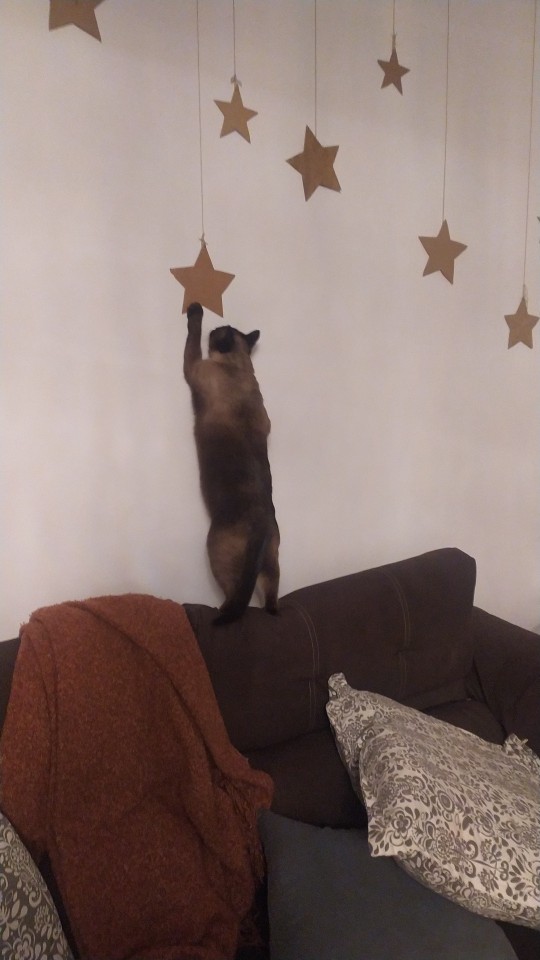


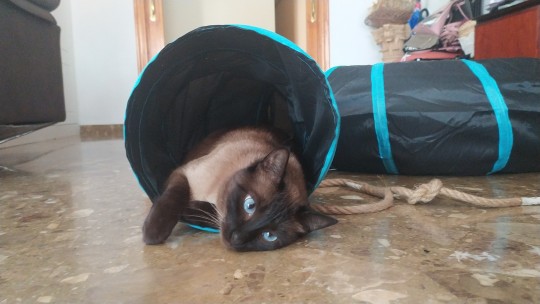

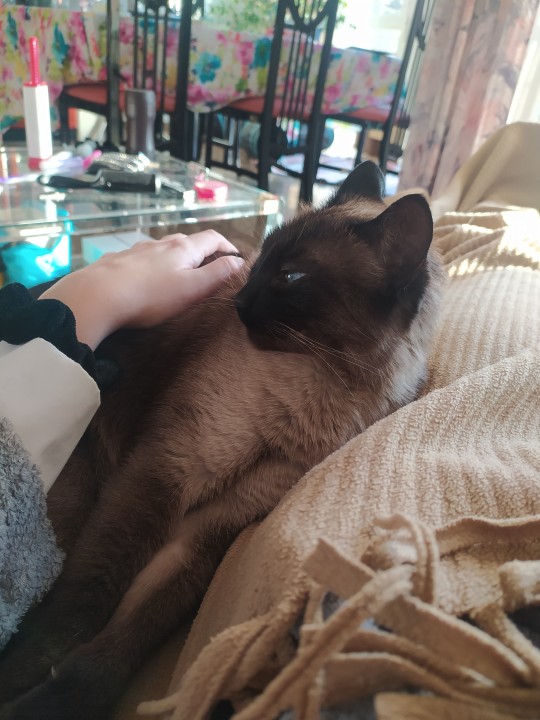

16/06/2016-23/02/2022
Hipatia(AKA "Pati" or "Sinvergüenza") González Moreno
3 notes
·
View notes
Text
Queretanos han dejado huella en el olimpismo

Durante este 2021 se llevarán a cabo los Juegos Olímpicos y Paralímpicos de Tokio; hay atletas queretanos están en la lucha por un boleto, mientras que Paty Valle ya tiene su lugar en la disciplina de para natación. La historia del deporte queretano cuenta que, desde hace 60 años, hay atletas que han representado al estado dignamente. El primer queretano en participar en la máxima justa del deporte internacional fue Enrique Rabel, que en los Olímpicos de Roma 1960 compitió en los 100 metros dorso consiguiendo el lugar número 29. En Múnich 1972, Montreal 1976 y Moscú 1980 el luchador Alfredo Olvera González entró en acción en los 48 kilogramos, de hecho, en estos últimos consiguió su mejor resultado al ubicarse en el sexto escalón. En el certamen ruso también participó Arturo Olvera González en calidad en calidad de árbitro de voleibol, poniendo en alto el potencial de los oriundos de Santa Rosa Jáuregui.

A la justa de Los Ángeles 1984 asistieron Bernardo Olvera González en la división 48 kg., de lucha, y el máximo exponente del tenis queretano Francisco Maciel García, jugador Copa Davis, quien logró colgarse la medalla de plata luego de disputar la final ante sueco Stefan Edberg con parciales de 1/6 y 6/7. Durante el torneo logró imponerse al español Emilio Sánchez Vicario, al suizo Jakob Hlasek y el italiano Paolo Cane. Puntualizando que esta disciplina era considerada de exhibición. Francisco Maciel también compitió en el Seúl 1988 y Barcelona 1992, pero no pudo repetir su hazaña de ubicarse en los primeros lugares. En Seúl 88 el luchador Jorge Olvera González fue eliminado en la tercera ronda de la categoría de 57 kilogramos. El atletismo de nuestra entidad estuvo representado por Isidro Rico en Barcelona 1992, ya que corrió la prueba de maratón y terminó en el puesto 29. Mientras que Agustín “El Chino” Morales fue parte de la Selección Mexicana Sub 23 que compitió en suelo español, y que no pasó de la primera ronda al empatar ante Dinamarca, Australia y Ghana, por lo que se quedaron en el tercer lugar de su grupo, eliminados por diferencia de goles.

Cuatro años después, en Atlanta 1996, Guadalupe Loma siguió los pasos de Isidro Rico, en la prueba de Maratón; sin embargo, se quedó en el lugar 51. En esta misma justa Carlos de los Cobos asistió como entrenador de la Selección Mexicana Sub-23 y su escuadra se quedó en los cuartos de final ante Nigeria que terminaría como campeón. A destacar el triunfo del Tri ante Italia con gol de Juan Francisco “Gatillero” Palencia. Posteriormente, el juvenil Juan Alberto Rodríguez logró el noveno lugar en parejas en la disciplina de voleibol de playa en Sydney 2000. Los Juegos Olímpicos fueron testigos del regreso de Isidro Rico, ahora en su faceta de entrenador, transmitiendo sus conocimientos al oriundo de Santa Rosa Jáuregui, Alejandro Suárez, durante los 5000 mil metros en Atenas 2004 y ubicarse en el sitio 24. Esta dupla se repetiría en Beijing cuatro años después pero ahora Suárez corrió los 10 mil metros y terminó en el lugar 35. En la capital de China también tuvieron un lugar las hermanas Escobar, Susana y Carmen (entrenadora), la primera en tres pruebas, 400 m en la que terminó en el lugar 20; la de 800 m fue su mejor competencia al ubicarse en el escalón 18 y en los 400 C.I. logró el sitio 30. Susana Escobar volvió a competir en los 400 m y 400 C.I.en los olímpicos de Londres 2012, logrando el lugar 28 y 29, respectivamente. En el certamen inglés el taekwondo, Querétaro estuvo representado por Erick Osornio Núñez (68 kg.) y Jannet Alegría Peña (49 kg.). El mayor de los hermanos Osornio terminó en el puesto 11 y la atleta de San Juan del Río en el quinto.

El buen trabajo en el taekwondo de nueva cuenta se vio reflejado con el boleto de Saúl Gutiérrez para asistir a los Juegos Olímpicos de Río 2016, en donde concluyó su participación en el lugar 11. Mientras que en calidad de jueces han participado en Juegos Olímpicos, Arturo Olvera en Tokio 1964 en voleibol, mientras que Mónica Gómez Su en la disciplina de equitación en Londres 2012 y Río 2016. Ahora, y después de ser pospuestos los juegos veraniegos en este 2020, para la justa deportiva de Tokio, Gilberto Cardoso se mantiene en la posibilidad de conseguir un boleto en la disciplina de judo y Carlos Javier Rojas en tiro con arco enfrentarán en 2021 sus eliminatorias, con el objetivo de conseguir un lugar en la delegación mexicana. También está en el limbo la presencia del luchador Andrés Vargas. Juegos Paralímpicos. Con una trayectoria ejemplar en la disciplina de para natación, Patricia Valle Benítez representó a Querétaro en los Juegos de Beijing 2008 logrando la medalla de Oro y la de bronce en las pruebas de 50 m y 150 m, respectivamente. En Londres 2012, Paty sumó dos bronces a su palmarés en los 50 m y 100 m. Además. en Río 2016 consiguió otro tercer lugar en los 50 m. Por lo que ahora se espera que los Paralímpicos de Tokio sean el cierre perfecto para una de las mejores atletas mexicanas de la historia en su especialidad. En atletismo adaptado, Evelyn Enciso Cervantes asistió a Beijing 2008 y Londres 2012, puntualizando que en estos últimos logró el séptimo lugar en los 800 m categoría SR, y se metió la final de los 100 m SR.

Olímpicos de Inverno. El queretano Germán Madrazo fue el abanderado por México en los Juegos Olímpicos de Inverno de PyeongChang 2018, y compitió en la prueba de esquí de fondo 15 km., concluyendo su participación en el lugar 116 con un tiempo de 59:35.4 minutos. Atletas olímpicos avecindados en Querétaro. Desde hace varios años la taekwondoínIridia Salazar vive en nuestra entidad, aportando sus conocimientos a las nuevas generaciones, ella se colgó la medalla de bronce en la categoría -57 kilogramos en los Juegos de Atenas 2004, luego de derrotar a la española Sonia Reyes por 3-2. En Los Ángeles 1984, Alejandro Irizar Barranco (padre del ex jugador de Gallos Blancos, Paolo Irizar) vio acción en pentatlón moderno. Mientras que en nado sincronizado Elizabeth Cervantes Quass formó parte de la selección mexicana de nado sincronizado en Barcelona 1992. En ciclismo Guillermo Mendoza representó a nuestro país en la justa olímpica de México 1968. Y Juan Manuel García Moreno compitió en polo acuático en Múnich 1972.
#QuerétaroOrgulloDeMéxico#QroOrgulloDeMx#Querétaro#Huella#Olimpismo#Queretanos#Juegos#Paralímpicos#Tokio#Atletas#Boleto#Natación#Deporte#Internacional
1 note
·
View note
Quote
•
El
peso cayó 2.25%, 43 centavos en 15 minutos y la bolsa de valores perdió 106.21
puntos, lo que demuestra que AMLO no está logrando un crecimiento para el país.
• En
contraste, Aguascalientes es la segunda entidad con mayor tasa de crecimiento
económico ya que solamente en 2018 tuvimos un crecimiento de 8.6%: Báez Leos.
Tras
la renuncia del hidrocálido Carlos Urzúa como secretario de Hacienda y Crédito
Público y quien era de las pocas personas congruentes y preparadas con las que
contaba la mal llamada cuarta transformación, México volvió a caer en la
incertidumbre, así lo dio a conocer el presidente del Comité Directivo Estatal
del PAN, Gustavo Báez Leos.
“Sin
duda esta situación cimbró a México, ya que el peso cayó 2.25% o sea 43
centavos en 15 minutos y la bolsa de valores cayó 1.22% perdiendo 106.21 puntos,
lo que demuestra que AMLO no está logrando un crecimiento para el país como
tanto lo presume, si no que estamos siendo testigos de un claro retroceso y
desaceleración económica que afectará las inversiones”, aseveró.
Báez
Leos mencionó que a Acción Nacional le preocupa la manera con la que se está
manejando el gobierno Federal, ya que está llevando a México al desempleo y
fugas de capitales, dejando claro que la misiva enviada por Carlos Urzúa no es
una renuncia, es más una denuncia.
“Las
preguntas que nos estamos haciendo todos es ¿qué viene para México con alguien
que está “gobernando” sin rumbo, con alguien que ratifica a un secretario sin
que la cámara de diputados lo apruebe, qué nos espera con alguien que insiste
en asegurar que México crecerá en materia económica al 4% teniendo una previsión
de crecimiento menos al 1.7%?”, resaltó.
En
contraste, Aguascalientes es la segunda entidad con mayor tasa de crecimiento
económico ya que solamente en 2018 tuvimos un crecimiento de 8.6%, y el día de
ayer el gobernador del Estado Martín Orozco Sandoval, arrancó la construcción de
la planta Continental que permitirá la creación de mil empleos de alto valor agregado,
demostrando así que Acción Nacional sí sabe gobernar.
Para
finalizar, el dirigente blanquiazul dijo que Acción Nacional exhorta al
Presidente de la República a que asuma con absoluta responsabilidad el manejo
de la economía, velando por los intereses de la nación y tomando en cuenta las
preocupantes observaciones del exsecretario de Hacienda, Carlos Urzúa.
Por su
parte y al hacer uso de la voz, la diputada federal Martha González, manifestó
que las señales del riesgo económico que se ven para México son preocupantes,
ya que la economía está estancada y los indicadores van a la baja, además de
que las calificadoras tienen al país en una perspectiva negativa.
“Hoy
le toca a la cámara de diputados hacer un nuevo nombramiento que una vez más
López Obrador se pasa por el arco del triunfo, da por hecho que se va aprobar, hoy
sesiona la Comisión Permanente en donde se establecerá un nuevo periodo
extraordinario para que se haga esta ratificación”, finalizó.
En la
rueda de prensa llevada a cabo en las instalaciones del CDE, estuvieron presentes
los diputados locales Gladys Ramírez, Paty García, Alex Serrano y Manuel
Velasco.
http://lainternota.blogspot.com/2019/07/lamenta-pan-el-retroceso-de-mexico-en.html
1 note
·
View note
Text
Pirineus-Barcelona 2030. Un debat que traspua ideologia.
Part de la gràcia del debat filosòfic entorn la teoria política és la infiltració d’aquest cap al nostre dia a dia com a societat, on l’actualitat ens brinda debats amb un rerefons teòric molt interessant.
Un d’aquests es troba latent a la política catalana i, a mesura que avancen els mesos, va guanyant importància: la candidatura als jocs olímpics d’hivern de 2030. Fa anys que se’n sent parlar, però darrerament ha tret el cap amb força en el debat de pressupostos catalans i ha posat de manifest tant les discrepàncies entre els membres de govern com les diferències amb els seus socis i la resta d’arc parlamentari.
Malgrat el debat públic en el marc de la competició electoral i partidista al país entre uns i altres, la qüestió és força més profunda. Al cap i a la fi, planteja dues visions oposades que sintetitzen amb força concreció un dels debats dins la teoria ecologista. D’una banda, trobem els partidaris de la candidatura, que veuen en aquesta una oportunitat econòmica molt substancial per l’economia pirinenca i alhora una porta oberta al creixement econòmic del territori i la seva transformació sostenible, potenciant la marca Pirineus-Barcelona al món. D’altra banda, altres sectors defensen que es tracta de l’enèsima proposta capitalista que no aborda els problemes reals del territori i suposa la perpetuació d’una dinàmica centralista de Barcelona i les seves elits, on es concep el Pirineu com a pati d’esbarjo i inversió d’aquestes.
Aquestes dues visions confrontades suposen la perpetuació del debat que Dobson (2014) planteja entre ambientalistes i ecologistes. Tot i ser ambdós corrents de pensament verd, confronten posicions. Mentre que els ambientalistes no pretenen derrocar sinó adaptar el capitalisme a una visió verda de l’economia (partidaris de la candidatura), els ecologistes fan una esmena a la totalitat del sistema capitalista plantejant una ruptura amb la forma de vida, producció i consum actuals (detractors de la candidatura).
Tot plegat planteja un debat molt ampli, que abasta des de qüestions econòmiques fins a científiques, passant per diferents visions polítiques i ideològiques. Més enllà d’això, és interessant fer una pinzellada a què ens diuen les dades i com afectarà el canvi climàtic al Pirineu, fet que és, en última instància, on el pensament verd posa el focus i centra els seus esforços.
Pel que fa a la temperatura, l’Observatori Pirinenc del Canvi Climàtic (OPCC) apuntava en el seu informe El canvi climàtic als Pirineus: impactes, vulnerabilitat i adaptació (2018) que es produirà, de cara a l’any 2030, un augment de la temperatura màxima d’entre 1 i 2,7 graus. Les mínimes es veuran augmentades d’una manera similar, augmentant entre 0,9º i 2,2º. Aquest augment de la temperatura anirà acompanyat de canvis en la neu: L’any 2050 hi haurà una disminució del 30% del gruix de neu precipitada el llarg de l’hivern, que es traduirà entre 20 i 30 dies menys anuals de precipitació en forma de neu (López-Moreno et al, 2017). Aquestes temperatures i precipitacions afecten les glaceres, unes de les grans damnificades del canvi climàtic. En els darrers anys, han experimentat una reducció mitjana de 6,3 metres i han vist reduïda la seva superfície en un 23,3% al Pirineu (Vidaller et al, 2021).
Davant aquestes dades, ambientalistes i ecologistes es troben de cara amb el veritable repte. Més enllà de debats ideològics i polítics, el quid de la qüestió és el futur, no només del Pirineu, sinó del planeta. Ens enfrontem a un repte que posa en qüestió la pervivència de la nostra vida tal i com la coneixem, i hem de decidir com hi plantem cara. De ben segur que la teoria política hi tindrà molt a dir.
Ignasi Torra i Carrera (@ignasi_torra)
Referències
Dobson, A. (2014). Prólogo. A Valencia Sáiz, A. (2014). Política y medio ambiente. México: Editorial Porrúa.
López-Moreno, J., Gascoin, S., Herrero, J., Sproles, E., Pons, M., & Alonso-González, E. et al. (2017). Different sensitivities of snowpacks to warming in Mediterranean climate mountain areas. Environmental Research Letters, 12(7), 074006. doi: 10.1088/1748-9326/aa70cb
Vidaller, I., Revuelto, J., Izagirre, E., Rojas‐Heredia, F., Alonso‐González, E., & Gascoin, S. et al. (2021). Toward an Ice‐Free Mountain Range: Demise of Pyrenean Glaciers During 2011–2020. Geophysical Research Letters, 48(18). doi: 10.1029/2021gl094339
Observatori Pirinenc del Canvi Climàtic (OPCC). El canvi climàtic als Pirineus: impactes, vulnerabilitat i adaptació (2018).
0 notes
Photo

Estamos muy contentos por fin el primer mensaje de concientización traíamos esa idea hace tiempo se la platique a Patty González Salvando Huellas si se podía hacer algo así en la barda de su negocio dijo deja pido permiso al dueño y que cren 😁 ella escogió el diseño las palabras y pago a un rotulista y así nace el primer letrero de concientización animal y con este letrero los invitamos a unirse donando un pedazo de su barda para poner mensajes. Pati es rescatista independiente y para ayudar a otras rescatistas o albergues vende peluches y cositas varias así que si ven sus publicaciones compartan o compren así estarán ayudando a un animalito de calle Les gustaría ser parte de esta idea ? Pueden apoyarnos donando un espacio de su barda, pintura o ayudando a Rotular Sería genial que muchas personas se unieran https://www.instagram.com/p/CU6c05rL6JI/?utm_medium=tumblr
0 notes
Text
Conversations | Alicia Ehni at NALAC Leadership Institute
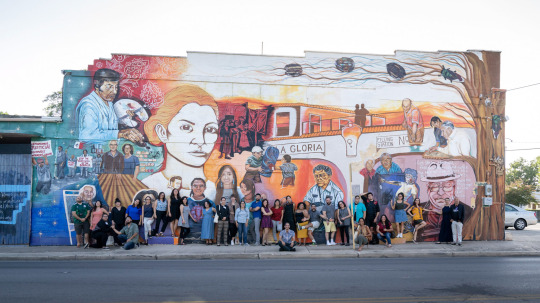
NALAC Fellows talk to IAP Newsletter Editor about their lives as Latinx artists.
In July, IAP Newsletter Editor, Alicia Ehni, participated in the NALAC Leadership Institute (NLI), hosted by the National Association of Latino Arts and Culture, which delivers innovative and practical strategies to artists and arts administrators chosen from all over the country. Over the last 18 years, the Leadership Institute has developed a curriculum that is based on a historical overview and analysis of Latino arts and cultures in the U.S., including the vital role of community involvement.
Adriana Gallego, NALAC Chief Operating Officer and artist, comments about this year’s program: “Every year, the NALAC Leadership Institute strengthens the Latinx and inter-cultural artistic sectors with multi-generations of artists and arts leaders to bridge collaborations and alliances across ethnic, geographic, and intergenerational lines. This connectedness is critical in our pursuit for cultural equity, which will arise when diverse populations address social inequality together and work to create shared opportunities for access to resources, cultural participation, and artistic production.”
This year, 29 artists and arts administrators were chosen to participate in the NALAC Leadership Institute in San Antonio. A follow-up was conducted a month later with the 2018 Fellows to see how this program is impacting their careers and lives. Many of these Fellows are wearing multiple hats. This interview highlights the different voices of talented Latino artists who share their insights and strategies on successfully navigating their multiple roles.
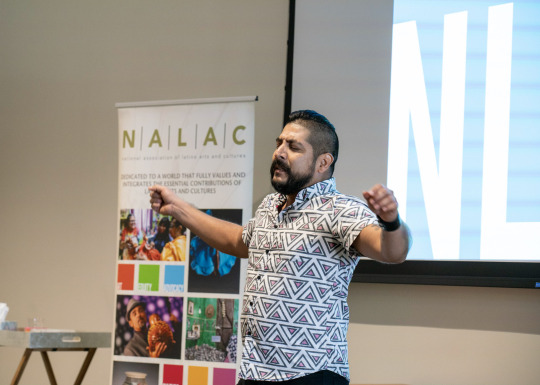
NYFA: How do you see your role as an artist and leader after participating in the NALAC Leadership Institute (NLI)?
Christine Lamprea: I have a new perspective on my career as a classical cellist. I see possibilities of curating a more uniquely tailored concert season for myself, rather than trying to succeed in more traditional models of success in classical music. I feel more empowered to lean into my strengths, some of which stem from the history of my parents and their immigration story, as well as characteristics that stem from the beauty of Latinx culture.
Jaime Garza: NLI has been a very strong support system for me. The week-long intense immersion of Latino-based art and culture made me feel like part of something bigger than myself.
In Chicago, I’m known because of my work as a musician with the band Dos Santos and as an arts promoter, curator, and organizer of independent events. The role I play in Chicago is to help and support other artists and musicians. Attending NLI has given me skills and a wider scope of Latinx culture, that I hope to use to continue assisting local artists and myself, so we can create meaningful art.
Jessy De León: I've always known that music and art reflect a nation's culture; however, through NLI I was able to see more clearly what the ones that came before us have done to preserve their Hispanic identity through the Chicano movement. NLI helped me realized that the non-profit I founded, Comparte tu Luz, was created not only to help communities understand the importance of art but also that artists have a responsibility to promote and preserve their culture, by remembering who they are and where they have come from. This is reflected in their art.
Johana Moscoso: After NLI I see my role as that of a connector who connects personal and intimate instances in daily life that affect our current society. Living in a small town in Wisconsin as a Colombian immigrant–who has a thick Hispanic accent and starts sentences saying ¡Ay!–has created an urgency in me to connect my workplace with immigrants who only speak Español, or as I grew up calling it, Castellano. This urgency has extended to my art practice.
For me, it is necessary to create art that critically reflects the Latinx culture as a vital component of American society, history, and art. I celebrate my Latinx culture by merging performance, video, sculpture, and fiber art into large-scale installations.
Michael Menchaca: I feel much more confident moving forward after NLI, with a better idea of what my artistic vision is and what I need to do in order to achieve my goals. I have started the groundwork to better organize my work schedule and prioritize my deadlines. The network of colleagues I made during the NLI fellowship has further motivated me to become a stronger cultural leader in the arts.
Paty Lorena Solórzano: After NLI, I felt an incredible sense of value and motivation to rise above the challenges that come from being in a field that lacks representation and equity for Latinx dance artists, especially for women of color!
I think there's a lot that comes from validation–to feel that your work matters and that you can acquire the tools to make your work visible. It gives you power. I feel a greater sense of responsibility for my Latinx community in dance, and I hope to use the knowledge I gained at NLI to continue to advocate for and uplift other Latinx dancers and choreographers. We really need it!

NYFA: What concrete actions will you implement in your current work?
Christine Lamprea: One of the strongest metaphors from NLI was the season arc, where an artist can create subcategories to delve into and market. I imagined myself holding the arc like a little basket, and I could reach in and pull out one of my recital programs to tour, or a future commission, or another project. The sense of being the owner of my season, rather than a hopeful participant in others’ seasons, was an important mental switch for me. Currently, I am developing a curriculum for a summer festival for Latinx string players, in addition to building my performance career as a solo cellist and pedagogue.
Jaime Garza: The things I learned and plan to implement are organizational and involve stepping back to see the bigger picture. Basing my collaboration or actions on my values will help my workflow in a more positive way. Organizing in groups, teams, or communities invested in decision-making is a must. Community building and partnerships are where I am putting more work going forward, in conjunction with grant writing and resources research.
Suzy González: NLI inspired me to keep doing what I do but to be more organized and proactive in doing it. It taught me to push myself to achieve my goals. For each of my roles–as artist, curator, educator, publisher–I now have the tools needed to strategically formulate my vision, mission, and goals. This will help me progress in my field without getting distracted by work that does not get me where I want to be. It also restored my sense of confidence and the reminder to not sell myself short.
Johana Moscoso: I will work with communities during my creative process, and create public programming around my art pieces to help foster relationships. Currently, I am working on funding the Ingrid López Project. It is a large scale installation that includes sculptures, tapestries, video and/or sound, and the participation of López’s Florida community. It celebrates the life of my beloved family member Ingrid and how she touched many lives before her untimely passing. She helped immigrants, especially Latinx individuals, when they moved to the United States. She assisted in creating better lives for their families. To make this project, I will reconnect with her community in Florida and document people’s testimonies and turn them into my artwork. The project aims to uplift immigrant’s voices and evoke empathy around migration.
Paty Lorena Solórzano: I am in the beginning stages of Mapping la Monarca: Danzas Migratorias, a site-specific migratory dance work and long distance walk that will begin at the Monarch sanctuary in my native Michocán, and will traverse the journey of the butterfly to Michigan. It will involve scientific, social, and choreographic research on the movement of the butterfly, and connect metaphorically to social justice and discrimination towards migrant communities from Mexico and Central America.
The NIL training gave key tools that will help me with this and other future artistic projects. Specifically, the funding workshop gave me insight into the breadth of resources available for artists. I think I used to look narrowly at the artistic/dance community for support, and now I realize the importance of moving through and beyond other supporting networks. If I can also let my community know what I as an artist can offer them, they, in turn, can support the work I do in creative ways. So for this project, I'm really thinking about finding collaborations outside of my creative circles, and finding support in networks in and beyond the usual funding resources typically available.
Additionally, through NLI, I learned about the structures of arts organizations. For example, though I was familiar with the function of a board of directors, it was helpful to go through the mock exercise of a board meeting conducting business. Again, having that knowledge and then having the NLI faculty giving us tools, encouraging us to serve in a board and become advocates for art in our communities...that's power. This is where decisions are made about the future of the arts in small and large scale ways, so the Latinx presence matters.

NYFA: The NLI program is very unique; it puts artists and arts administrators in the same room. How did you benefit from this program format?
Mario Mesquita: As an artist and administrator, I find it confusing to separate my roles. I am more comfortable with “cultural producer,” which encompasses both. Much of my art practice and chosen traditional-work involves creative ways to make change, including conversation, organized moments of exchange, reflection, brainstorming, and solution-making. Being in a room with like-minded individuals was nutritive and served to strengthen and fortify my role. With new, lasting relationships from this experience, my hope is to continue to investigate and take action using art as a tool for social change and education. At every stage–from funding, organizing, and implementing, I will encourage reciprocal dialogue and learning.
Johana Moscoso: I learned that my vision sustains my art practice and my job as a Residency Coordinator in the John Michael Kohler Arts Center’s Community Arts department. This institution funded my trip to the NLI, supports my bilingual work with the Latinx community, encourages new art in public spaces by Latinx women artists, and welcomes professionals from different ethnicities.
Meeting Latinx leaders was such an inspiring and phenomenal experience! With them, I found answers to questions that I never thought someone else would ask, or feel the necessity to share. Switching between English and Spanish, learning about the history of our “American Latinidades,” and being part of such an energetic and powerful community is an experience I will always remember.
Jessy De León: I am both an artist and arts administrator, and being in a room full of both allowed me to enhance my vision about art and the importance of distinguishing and separating both roles. As Executive Director, I've been so focused on getting the paperwork done lately that I had forgotten to devote some time to get creative, write new songs, paint, dance, etc... Both roles are so important and brighten and beautify Comparte tu Luz in different ways, where you see the same picture through different lenses that allow you to truly see the whole picture. The minute I got home I started applying this and I've written about 3 songs, created some beats, and will soon start rehearsing a new dance while also making sure we are moving forward with the paperwork. NLI was like laser surgery to enhance my blurry vision.
This interview is part of the ConEdison Immigrant Artist Program Newsletter #108. Subscribe to this free monthly e-mail for artist’s features, opportunities, and events.
- Interview Conducted by Alicia Ehni, Program Officer at NYFA Learning
All Images: Luis M. Garza, courtesy of NALAC.
#iap newsletter#immigrant artist program#conversations#nalac#alicia ehni#nyfa learning#business of art#iap#interview#immigrant artist mentoring program#christine lamprea#jaime garza#jessy de leon#johana moscoso#michael menchaca#paty lorena solorzano#suzy gonzalez#mario mesquita
1 note
·
View note
Text
The Stages of Psychotherapy, J.L.G. de Rivera, MD Professor and Chairman, Dept. of Psychiatry Universidad de la Laguna Tenerife, Canary Islands, Spain
ABSTRACT - The unfolding of the psychotherapeutic relationship is considered to proceed in four main stages: Commitment, Process, Change and Termination. Each stage has its own tasks and sub-stages, and has to be reasonably completed before transition to the next can take place. Relevant aspects of the Commitment stage are: perception of the therapist, motivation and technical suitability. The search for patterns, particularly the breaking of vicious circles or pathological positive feedback loops, is one of the important tasks in the process stage, as are the acquisition of new information and the consolidation of therapeutic gains. Change requires to relinquish the illness, to initiate a new healthier psychic life and to develop adequate procedures to protect and maintain the newly acquired strengths. Termination requires the development in the patient of a therapeutic attitude towards himself, and the mutual acknowledgement of independence and autonomy between patient and therapist. Each stage has its own characteristic tasks and difficulties, and requires different tactical interventions. The identification of each particular stage as psychotherapy proceeds, allows for a more effective therapeutic strategy. It is difficult to find in the literature an adequate definition of psychotherapy, and in particular one which is sufficiently comprehensive so as to include all current systems and forms without losing conceptual accuracy. However, given the very diffuse and at times conflicting nature of the subject, one must come up with a definition which gives an outline of the field based on its very roots, and which affords a common starting point applicable to the more than 200 psychotherapeutical procedures in existence today. Despite the many differences in fundamental theory and technical detail, there are some points in which all the methods tend to coincide, namely that psychotherapy requires an interpersonal relationship, that its aim is to make the patient or client better, and that in order to do so, certain techniques or principles must be J. L. GONZÁLEZ DE RIVERA Página 2 de 8 applied. Taking those basic elements of agreement as my starting point, I would define psychotherapy as "A purposeful and willing relationship between at least two people, one who is supposed to know what he is doing, and the other who wants help to change his life for the better". My formulation deliberately excludes from the scope of the psychotherapies any kind of well intentioned, friendly conversations, as well as the nonspecific effects exerted on a person by the presence, personality or affection shown by others. Let us look in detail at some of the elements of this definition. Firstly, and most importantly, psychotherapy is above all a relationship, i.e. it requires the establishment of a coherent persistent rapport which can be maintained even during periods of physical separation. Secondly, it is a relationship with a purpose, i.e. it is not accidental nor unconditional but has an aim which justifies it and bestows meaning on it. Thirdly, is a willingly established relationship. Although this point may not be clear in therapies where the aim of the treatment and how this aim is to be achieved is not formulated, I do however consider this an essential element in the definition because it implies the need for consent, for a decision and, at least to a certain extent, for a commitment to the therapeutic relationship and its aims. The need to have at least two people is obvious, although this does not rule out the involvement of more than two, as in the case of group psychotherapy. The therapist is "The person who knows (or is supposed to know) what he is doing", which means: 1) He is aware that he is undertaking a clinical intervention which demands professional skill, correct behaviour and responsibility; 2) He has the ability to be generous in the relationship, ready to offer something of himself without expecting the patient to meet his own affective needs; 3) He has operational knowledge of mental structure and function, of developmental, adaptative, and defensive processes, of the causes and mechanisms of psychopathology, and of the techniques required for his intented therapeutic intervention; 4) He has the necessary skills for establishing and sustaining the relationship, for obtaining and interpreting the relevant data, and for choosing and monitoring the appropiate intervention strategies (De Rivera 1982). Finally, "The person who wants help in order to change his life for the better", called the patient or the client, must add at least two ingredients to the psychotherapeutical situation: first, he/she must have a minimum amount of motivation to improve his/ her life, which is neither as obvious nor as common as might first be thought. In fact, one of the therapist's main tasks is to ensure that the patient is aware of the shortcomings of his present way of life, that he wants the best for himself, and that he is prepared for cooperative work towards progress and self-development. Often, the patients are not looking for therapeutic help, but are rather trying to satisfy affective needs, to depend on someone and, occasionally, seeking masochistic punishment. Another primary task of the therapist is to transform these desires into a working alliance in pursuit. of a common goal, and if this does not come about, instead of psychotherapy one is left with one more in a series of repeated relationships which are at best sterile. In fact, turning the patient into a suitable candidate for psychotherapy and leading him/her to the point of readiness to start treatment is the most difficult, complex and frustrating task in the whole process. Once this is achieved, the rest is relatively easy. Stages of treatment The development of any form of psychiatric treatment, and particularly the development of psychotherapy, may be considered as divided into four stages or phases, THE STAGES OF PSYCHOTHERAPY Página 3 de 8 each of them with its own sub-phases and characteristic elements. The correct order and development of each stage is essential if therapeutical progress is to be made, and it may be necessary at times to modify the overall strategy according to the stage of the relation. Multidimensional treatment makes exhaustive use of the principle of step-by-step development, and an ongoing analysis is carried out of the necessary tactics for each step, without ever overlooking the need to adapt this to the overall strategy. Here I will describe briefly each of these stages and provide the most important definitions and conceptual limits, and will save for a future specific publication on the subject a more detailed description of the most appropriate interventions in each case. Stages of Psychotherapeutic Relationship 1. COMMITMENT PERCEPTION OF THE THERAPIST MOTIVATION TECHNICAL SUITABILITY 2. PROCESS SEARCH FOR PATTERNS NEW INFORMATION CONSOLIDATION 3. CHANGE RELINQUISH INITIATE SUSTAIN 4. TERMINATION GRANTING PERMISSION AUTONOMY 1. The commitment is the initial stage in which the patient and the therapist decide to devote much of their time, energy, and capacity to establish relations to the achievement of therapeutical targets. Sometimes the therapist finds himself strongly reluctant to enter this stage, and when this is the case he must choose not to treat the patient, or at least he must delay the treatment until he has identified and remedied the causes of his reluctance. The patient can commit himself immediately, unconsciously and automatically or he may require beforehand an exploratory period. The elements influencing the decision to be taken by the patient are: 1) His perception of the therapist, or the extent to which he considers him to be competent, empathic and well disposed towards the patient, as well as whether he possesses a power which the patient lacks and would like to acquire. 2) The intensity and quality of his motivation. The most warm and skilled of therapists may immediately drive away a patient who is merely seeking to satisfy his sadomasochist needs, unless he manages to convince the patient to change his motivation or entice him with the prospects of the arduous efforts needed for the change to come about. 3) The technical suitability or the extent to which the education, personality and past experiences of the patient fit the proposed therapeutical methodology. Some patients can offer stiff resistance to certain techniques whereas they will accept others more readily, and due account must be taken of this when the initial therapeutic approach is drawn up. Sometimes it may be necessary to apply a tailor-made technique during the commitment stage, delaying the most effective and indicated methodology for later stages. 2. The process is the most complex stage and constitutes the central body of the treatment. It can be divided into three concurrent aspects: the search for patterns, the, gathering of new information and the consolidation. The relative importance of J. L. GONZÁLEZ DE RIVERA Página 4 de 8 each aspect varies according to the kind of problem and the type of patient but, in any case, in the initial stages of this step the sensation of psychic movement is more important than the nature of that movement. The process must make the patient experience that he is becoming aware of something, and this is more important than what he is becoming aware of. Searching for patterns. Psychic phenomena and their behavioural manifestations do not occur just in any way, but rather they follow some more or less idiosyncratic rules and paths which we call patterns. Pathological patterns are characterized by their excessive rigidity, and by the fact that they are not in keeping with their present context, are unsuitably repetitive, and are harmful to the patient (De Rivera 1991). Searching for patterns REPETITIONS TRIGGERS VICIOUS CIRCLES INTERACTIONS The identification, marking, and eradication of these patterns, with or without the patient being aware that they exist, is an essential element in the process, and is perhaps that which provides the sternest test of the therapist's technical skill. Repetitions are the most simple patterns, and they are easily identified by their inadequate presentation, with no apparent external factors which triggers them off and no obvious associative link with the general context of the situation. When such a pattern occurs regularly, the identification of the common elements in the situations in which it occurs provides the first clues as to its meaning. Sometimes, repetitive patterns are sparked off in a sudden and even dramatic fashion due to certain stimuli which are irrelevant in themselves but act like the trigger of a loaded gun ready to fire. Vicious circles are repetitive sequential patterns which are interrelated by a positive feedback effect, and these can maintain themselves indefinitely. They are extremely important in psychopathology, since they are responsible for the persistance of psychopathological states long after the disappearance of the etiological factors which initiated them. The discovering of operational vicious circles in each case must be followed by the identification of their weakest link, or the element of the circle where appropriate intervention will be more efficacious. Two typical vicious circles, described in previous work (JLG De Rivera 1981; 1984) and widespread in clinical experience, are shown below (figures 1 and 2). The practical therapeutical applications of the analysis of vicious circles are obvious. In the case of anxiety syndromes, and to put it very simply, breaking the circle by directly counteracting the experience of anxiety through relaxation or by using psychotropic drugs may prove to be the most effective treatment with some patients. In other patients, analysing the internal conflict may be more appropriate or, still in others, modifying the behaviours giving rise to external conflicts, or supporting the most adaptable defence mechanisms and inhibiting the most unsuitable ones, could prove to be more successful. What is quite obvious is that no treatment can be effective overall if it does not break the positive feedback within the circle, even though it may be symptomatically effective in an isolated and specific manifestation of that circle. The same can be said for the vicious circle of depression in which, irrespective of the point of entry, the situation is selfsustained and can be reproduced even after an apparently effective treatment that does not solve completely the repetitive circular tendencies. Repetitions in the relationship corre- THE STAGES OF PSYCHOTHERAPY Página 5 de 8 Fig. 1. The vicious circle of anxiety (JLG de Rivera 1981) generally commences with a situation of conflict involving important persons in the patient's environment, a situation which is internalized and transformed into an internal psychic conflict. Recalling this internal conflict or its nearness to the patient's consciousness generates anxiety, which in turn sets in motion automatic defence mechanisms in order to avoid the unpleasant experience. Since these mechanisms often prove to be poorly suited to the real demands of the environment, new external conflicts are originated which once more become internalized or which reactivate existing internal conflicts. Fig. 2. The vicious circle of depression (JLG de Rivera 1984) can be caused by a loss and subsequent grief reaction which, if not solved rapidly and effectively, or if it coincides with other circumstances which are already overloading the individual's adaptation capacities, evolves into a stressful situation, the continuance of which activates neurotransmission mechanisms. The hyperactivity of these mechanisms can exhaust them, thereby inducing a catecholamine and/or serotonin deficit, which leads clinically to a depressive state. The lack of interest in his surroundings and the generalized inhibition of all activity and initiatives leave the depressive patient in a situation of competitive inferiority and he may become prone to suffer further losses readily. J. L. GONZÁLEZ DE RIVERA Página 6 de 8 spond to what is called transference in psychoanalysis when referred to the therapist. These types of transference-repetition are best handled when interpreted and corrected early when they are of a negative kind. Conversely, when they are of a manageable positive kind, they may be permitted and even reinforced throughout the whole process stage and even during the beginning of the change stage. Repetitions in relationships outside the therapeutic situation are very common and should be managed in a similar way to any other kind of repetitive pattern. Generally, even in cases where they seem to have beneficial effects, repetitive patterns are automatic, rigid and forced phenomena. A global, complete treatment should thoroughly restore the patient's freedom of action, although the correction of non- harmful relationship patterns can generally be put off until the last stage. The acquisition of new information is the part of the process which develops in the patient the cognitive and emotional structures necessary for correcting his mistakes, offsetting his defects and solving his conflicts. The acquisition of new information in the psychotherapeutical process PRECEPT EXAMPLE DISCOVERY CONDITIONING SUGGESTION Precept comprises specific orders, direct teachings or warnings, similar in all respects to those applied in traditional education. The example acts in a non-specific fashion when the therapist represents for the patient the embodiment of what the latter wants to bring about within himself, and in a specific fashion when the therapist shapes concrete actions and attitudes for the patient and monitors his learning of them. The discovery or insight can be defined as the process through which the meaning, importance, pattern and purpose of an experience is clarified. It is very similar to the creative process (De Rivera, 1978) and consists of the same stages of preparation, incubation, inspiration and elaboration. In very loose terms, it may be considered like a discovery made by the patient giving new meanings to experiences already known, but previously assessed in a different way. Conditioning involves the practical clinical application of the traditional principles of learning and behaviour modification. Suggestion, finally, is a precept which avoids and turns around the subject's conscious functions of critical evaluation, either as a result of the way it is presented, or due to the patient's state of consciousness at that particular time. 3. The change stage follows the process and represents its conclusion and success. There are three important aspects in this stage which need to be consolidated to ensure permanent therapeutic results. The first is the repudiation of the illness relinquishing all related elements, including pleasant ones such as the positive relation with the therapist, and useful ones such as the many ways in which responsibility can be shirked due to being ill. This process of repudiation or relinquishment is akin to grief, and the patient has to get over all his reasons for remaining ill and assure himself that, in spite of these reasons, he prefers his new healthy state of functioning. We must remember that, in addition to the well-known secondary gains which all pathologies involve, there is a Primary Gain which can be conceptualized as the (neurotic) prevention of a harm which seems even greater than that inflicted by the symptoms. The success of this stage requires the complete and thorough acceptance of this "Greater Evil", through the THE STAGES OF PSYCHOTHERAPY Página 7 de 8 work of the psychotherapeutic process. The other two aspects of the change are the initiation of free, appropriate and voluntary patterns of action, that replace old pathological behaviors, and the sustaining of these patterns through the creation of mental structures capable of detecting, interrupting, and neutralizing any pathological repetitive or vicious-circle mechanism which might appear. Frequently, this means the persistent adoption of mental hygiene habits and the permanent application of personal psychological techniques for preventive purposes. 4. The termination stage constitutes the "graduation" of the patient as an expert in the functioning of his own mind, and it implies that the therapist and the patient recognize each other as mature, autonomous, and independent individuals. This is the stage where positive transference relations, regressive forms of dependence, and childish idealizations have to be solved definitely. In this phase, the patient becomes aware of his own strength and realizes that he alone is responsible for his own life. The three interventions of the therapist during this stage are: 1) the abdication of his role and the granting of his teachings and methods, which now belong to the patient, 2) the handing over of permission for the patient to develop his life and act on his own responsibility and 3) the definitive acknowledgement of the patient's autonomy, and the affirmation of his own autonomy with respect to the patient. Although in some cases extremely fast, this stage often lasts longer than the rest of the treatment, either in the form of memories and fantasies concerning the therapist, particularly at times of stress, or as sporadic requests for isolated visits to the therapist. Conclusion The various schools, therapeutic trends and psychiatric orientations represent partial interpretations of Human Nature in general, and of psychopathology and psychotherapeutic processes in particular. Some of the factors maintaining such partial diversity may have to do with emotional peculiarities of therapists training (De Rivera 1980). A more complete view can be obtained if one accepts that the nature of both the origin of the psychopathology and the therapeutic process is multidimensional, and that some approaches may be more suited to a particular dimension than to others. Global psychotherapeutic treatment aims to establish the precise dimensions where therapeutic intervention may prove more efficacious, by borrowing techniques from diverse therapeutic methods or developing its own interventions designated to meet pre-established objectives. The formulation of how things should be once treatment has been successfully completed, that is, the goals or results to be expected, are an important aspect of the initial therapeutic contract. Unlike some therapeutic practices, which follow a path from the vague exploration of the past towards an uncertain and unknown future, I favour a method which enables the patient to determine the final aim he wishes to achieve, whereas the therapist helps him to negotiate, both consciously and unconsciously, the intermediate steps. The division of the overall therapeutical process into its component steps or stages facilitates the task, and allows to establish with a reasonable degree of accuracy the probable length of the treatment, the distance travelled, and the targets which have yet to be achieved at a given moment. Aknowledgements Thanks are due to Prof. A. GarcíaEstrada for his kind advice and review of the manuscript.
http://www.psicoter.es/_arts/92_A110_10.pdf
0 notes
Text
#Elecciones2020 #Tepeapulco CUMPLIRÉ MIS COMPROMISOS Y PROPUESTAS DEL DEBATE: PATY GONZÁLEZ
#Elecciones2020 #Tepeapulco CUMPLIRÉ MIS COMPROMISOS Y PROPUESTAS DEL DEBATE: PATY GONZÁLEZ @cdeprihidalgo
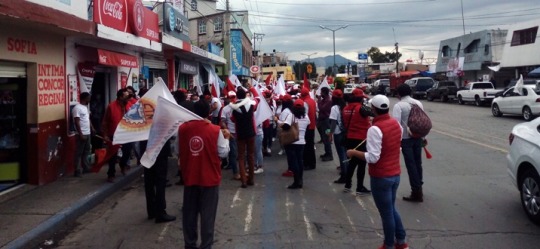
La ciudadanía de Tepeapulco esperaba un debate más nutrido de propuestas, sin embargo, les sirvió para reafirmar que este domingo 18 de octubre, su voto será para un triunfo categórico de Paty González López, la candidata del Partido Revolucionario Institucional (PRI) a la presidencia municipal de Tepeapulco, la única que, como lo hizo durante la campaña, expuso compromisos con contenido y…
View On WordPress
0 notes
Text
PIDEN #NAUCALPENSES DESTACADOS NO BAJAR LA GUARDIA ANTE #COVID19
PIDEN #NAUCALPENSES DESTACADOS NO BAJAR LA GUARDIA ANTE #COVID19En la Fase 3 de la emergencia sanitaria por coronavirus, personajes destacados de Naucalpan piden a la población reforzar las medidas preventivas y, sobre todo, permanecer en casa.
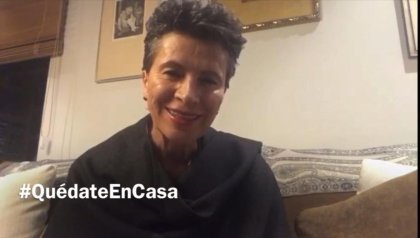
Las voces que se sumaron a este llamado corresponden a la actrices Patricia Reyes Spíndola, Emilia Carranza, Isadora González y Paty Díaz.
“Cuídense,…
View On WordPress
0 notes
Photo
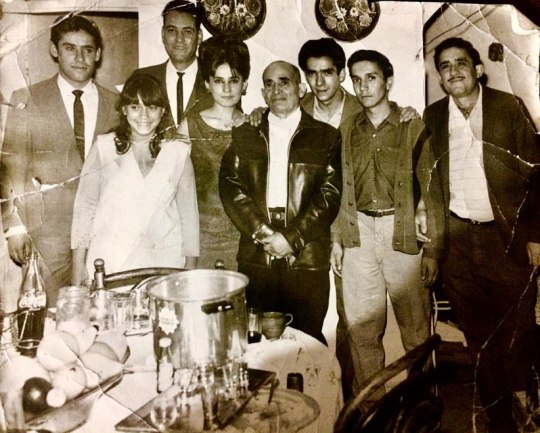
Que padres fotos nos compartió mi prima Paty de nuestros papas, tíos y abuelo .. algunos ya no están y se les recuerda con cariño (fam Alvarez González) (en León, Guanajuato) https://www.instagram.com/p/B91y8hKBSdU0PFZhhWxFnqYQTjiJ_WEYgWOXKU0/?igshid=3mog44kq5i1r
0 notes
Photo

#CumpleDeJavi #Parrilla #Paty (en González Catán) https://www.instagram.com/p/B8ulr8bpH9M/?igshid=1btczrdxisndr
0 notes